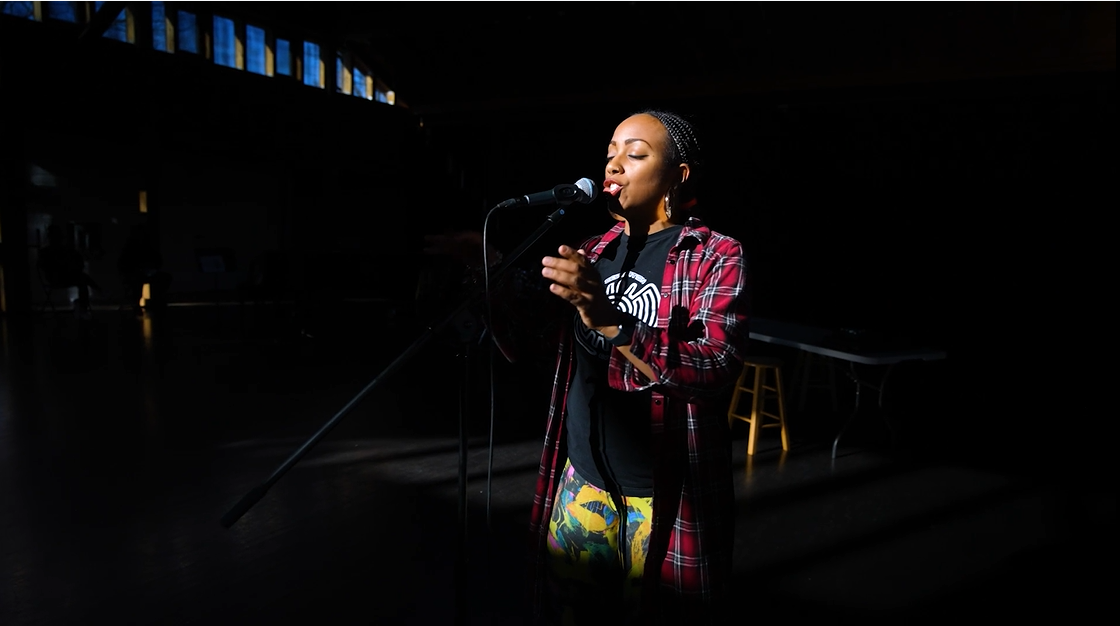ABOUT ROSY SIMAS
Rosy Simas (Seneca Nation, Heron clan) is a transdisciplinary and dance artist. Her knowledge of her Haudenosaunee family and lineage, stored in her body and expressed through her work, is the underpinning of her relationship to culture and history, and manifests in the moving people, images, and objects she makes for stage and installation. Alongside a team of Native and BIPOC artists, her work weaves personal and collective identity themes together with family, sovereignty, equality, and healing.
During her Pillow Lab residency (March 26–April 5), Simas began developing a new work that evokes her ancestors, their peacemaking, and their diplomacy to bring people together in action and rest. Her Haudenosaunee predecessors created the Great Law of Peace, a guide that united warring nations long before the founding of the United States. The words, methods, and actions of the Haudenosaunee served as a model for the creation of the U.S. Constitution. For this project, Simas returned to Haudenosaunee stories, ideas, and actions as a means to find peace and create a space that stirs the heart and mind—a place of rest for Native / BIPOC / LGBTQIA+ people in this time of divisive politics, bigotry, racism, and loss of life. Following Simas’ residency at the Pillow, she reflected on how identity influences her work, and where the creative team is headed next.
What’s one challenge you’re excited to tackle in your current project?
Sourcing Onöndowa’ga:’ (Seneca) and Hodinöšyö:nih (Haudenosaunee) material culture and lifeways to guide the embodied research. This means delving into not just the object being made, but the mindset required to do it properly. I then work on translating this process to a movement score. This score constantly changes as I unearth Onöndowa’ga:’ embodied culture.
Who I am IS my work.
How has your cultural background or heritage influenced your work?
I am Onöndowa’ga:’, Heron clan, in relation with the world, so who I am IS my work.
Is there something you’re currently reading, watching, or listening to that’s influencing your work?
I am researching documents from the late 1700-1800’s on cultural survivance. This includes primary sources like journals by Quakers, antique maps, correspondence with the government, documentation of speeches by Hodinöšyö:nih leadership, and oral history and language passed down through time.
What’s next for you after your residency at the Pillow Lab?
Our creative team will reunite in June 2025 for our next creative residency at the Walker Art Center in Minneapolis, MN, to continue developing the work. After three more residencies, the work will have its world premiere May 16-19, 2026 on the McGuire stage at the Walker Art Center.
In addition to the performance of A:gajë:gwah dësa’nigöëwë:nye:’ (i hope it will stir your mind) on stage, an installation, by the same name will open February 12, 2026 at the Walker Art Center Burnet gallery.
Dive Inside the Pillow Lab
Inside the Pillow Lab is an intimate film series that captures works in process and behind-the-scenes moments of what it’s like for artists to live, work, and rehearse together in residencies on the Pillow’s retreat-like campus.
